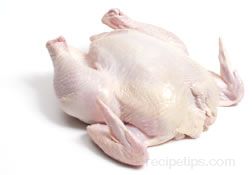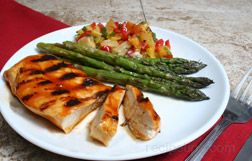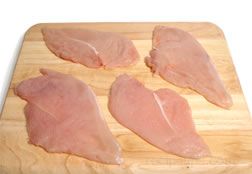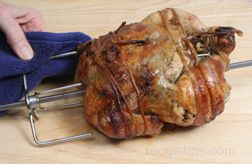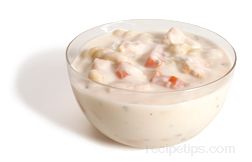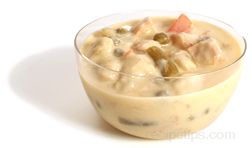Most chickens are commercially raised in controlled environments with commercially produced feed. Free-range chickens, which are raised in an environment that allows them to move freely and to consume organically grown feeds rather than feeds produced with chemical assistance, are becoming readily available. Free-range chickens are typically sold when they reach an age of 10 to 14 weeks and a weight of 4 to 5 pounds. In addition to free-range chickens, other varieties include the Cornish game hen or Rock Cornish hen, which is a cross between the Cornish hen and the White Rock chicken. Cornish hens are processed for consumption at an age of 1 month and typically weigh 2 to 3 pounds.
In order to produce a high-quality product, commercially raised chicken is processed using methods such as chilling the poultry immediately after slaughter in ice-water baths and using purified chilled air, which helps to retain natural juices within the chicken. It also eliminates each bird from being in contact with other birds, which may cause bacterial cross-contamination. Other methods used for providing the best possible product include the use of natural or vegetarian feeds and the elimination of antibiotics usage.
Chickens are graded with an A, B, or C designation. A Grade A chicken has the most meat and is the best choice overall while grade B is slightly less meaty and grade C is most often sold to commercial processors. Chickens can be served in a variety of dishes from appetizers to salads, soups, stews, and main dishes. The eggs of the chicken are the most common type of egg used in cooking.

